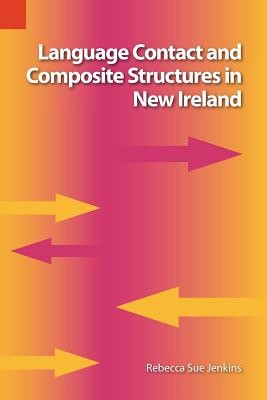
- We will send in 10–14 business days.
- Author: Rebekah Sue Jenkins
- Publisher: SIL International, Global Publishing
- Year: 2005
- Pages: 278
- ISBN-10: 1556711565
- ISBN-13: 9781556711565
- Format: 15.2 x 22.9 x 1.5 cm, softcover
- Language: English
- SAVE -10% with code: EXTRA
Language Contact and Composite Structures in New Ireland (e-book) (used book) | bookbook.eu
Reviews
Description
Widespread multilingualism in Papua New Guinea provides an ideal situation for analyzing the dynamics of language contact. In this book, the author examines the relationship of indigenous Austronesian languages and the pidgin/Creole language, Tok Pisin. Jenkins argues that in New Ireland, Papua New Guinea, the direction of influence between languages was first from the indigenous Austronesian languages to Tok Pisin, but is now from Tok Pisin to the indigenous languages. Jenkins applies the principles of Matrix Language Theory, Abstract Levels, and 4-M Models to the development of Tok Pisin as a pidgin/Creole language based on the Austronesian substrate. The degree and types of dialect variation, codeswitching, and borrowing are illustrated primarily from Tigak. Other languages are also used to demonstrate phenomena such as language shift, convergence, attrition, and language death. A grammatical sketch of Tigak provides background for the discussion of the language contact phenomena. The geographical location of the Tigak places them in close contact with a large number of languages, thus making them especially appropriate for the kind of study reported in this book.
EXTRA 10 % discount with code: EXTRA
The promotion ends in 21d.00:42:59
The discount code is valid when purchasing from 10 €. Discounts do not stack.
- Author: Rebekah Sue Jenkins
- Publisher: SIL International, Global Publishing
- Year: 2005
- Pages: 278
- ISBN-10: 1556711565
- ISBN-13: 9781556711565
- Format: 15.2 x 22.9 x 1.5 cm, softcover
- Language: English English
Widespread multilingualism in Papua New Guinea provides an ideal situation for analyzing the dynamics of language contact. In this book, the author examines the relationship of indigenous Austronesian languages and the pidgin/Creole language, Tok Pisin. Jenkins argues that in New Ireland, Papua New Guinea, the direction of influence between languages was first from the indigenous Austronesian languages to Tok Pisin, but is now from Tok Pisin to the indigenous languages. Jenkins applies the principles of Matrix Language Theory, Abstract Levels, and 4-M Models to the development of Tok Pisin as a pidgin/Creole language based on the Austronesian substrate. The degree and types of dialect variation, codeswitching, and borrowing are illustrated primarily from Tigak. Other languages are also used to demonstrate phenomena such as language shift, convergence, attrition, and language death. A grammatical sketch of Tigak provides background for the discussion of the language contact phenomena. The geographical location of the Tigak places them in close contact with a large number of languages, thus making them especially appropriate for the kind of study reported in this book.


Reviews